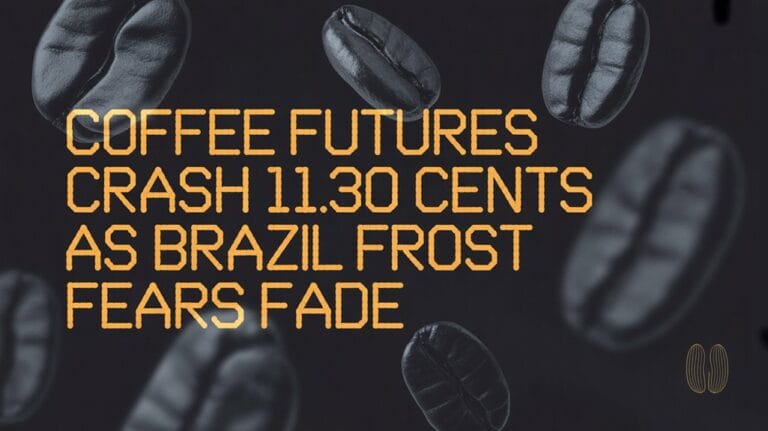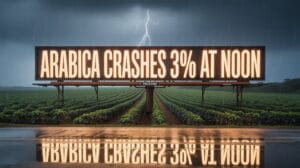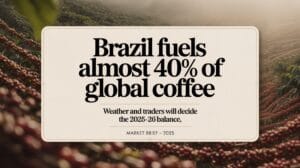As fears of frost damaging Brazil’s coffee crops faded, futures prices dropped sharply this week. September contracts plunged to 303.75 cents per pound, an 11.30-cent fall from earlier levels. Prices had briefly jumped above 327 cents on frost rumors, but weather data soon showed minimal damage. Arabica futures sank 4.65%, hitting a five-and-a-half-month low, while robusta slumped 3.99% to a 13-month bottom. The swing reflects the coffee market’s volatility when Brazilian crops face weather threats during June-July’s frost season.
This year’s cold snaps caused isolated leaf damage in southern zones but left core growing areas unharmed. Field technicians say the crop’s resilience kept losses low, though full impacts won’t be clear until fruiting. Brazil’s coffee belt dodged deep freeze conditions needed for severe harm, with damage limited to non-critical regions. Frost risks remain until early August, but recent events didn’t disrupt national output forecasts. The Brazilian coffee sector is essential, supporting approximately 25 million farmers across the region.
Brazil’s 2025/26 harvest remains on track for a slight production rise, with 35% completed by mid-June—matching five-year averages. Rains slowed some fieldwork, with robusta harvests at 49% and arabica at 26%. Cooxupe, Brazil’s largest co-op, reported 24% of its harvest done by June 20, behind last year’s pace but still manageable. Analysts expect stable output for 2026/27 unless new weather shocks hit.
Prices have slid seven weeks straight as global supplies stay ample despite projections of a widening arabica deficit. Traders now focus less on frost and more on Brazil’s dry June-July period, which stressed crops through moisture loss. The market’s recent retreat reflects an erosion of weather risk premiums as speculative investors unwound positions built during the frost scare. Agricultural experts warn that insufficient September rainfall could disrupt flowering, potentially leading to reduced yields despite the recent frost reprieve. While frost fears often spark short-term price spikes, the market’s now weighing rainfall needs for flowering and bean development.
The shift from frost to dryness marks a critical phase for Brazil’s coffee belt. With peak cold threats passing, farmers hope for steady rains to support next season’s crop. For now, the coffee market’s caught between steady harvest progress and uncertainty over longer-term weather patterns—a balance that’ll keep traders on edge through the coming months.




